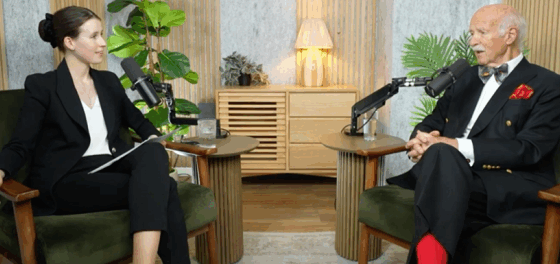How hotel brands an their loyalty programs fit together. Ideas, tips and thoughts on designing ads in current environment. Attribute selling is still a thing.
Hello,
I’ve never beed really in love with hotel loyalty programs. As such I don’t consider them loyalty programs (they’re given away for free), but there’s no denying that for some customers they totally work. So maybe there’s more to them than just a plastic card. We can discuss that on the bottom of the newsletter. Enjoy the read.
Best, Martin
Sponsored by Klairhaus. Support the newsletter, treat someone to great office gadgets.
Hotel brands and rewards programs
Accor just announced that they reached 100 million members on the ALL rewards program. Apparently the major airlines make between 30/50% of their profit margin from selling miles to third parties, is that what hotel brands are aiming to do too? In my opinion the global hotel brands/companies have two key products and markets. Loyalty/Rewards programs: the main product they sell to guests. Hotel Brands/Labels: the main product they sell to investors. This isn’t a bad thing, it is just a more understandable way to look at it. (see more in my column below)
HOTEL LOYALTY AT ACCOR
Ending “Performance Marketing”
There’s an argument here that pure performance marketing should not exist as it works with brand marketing. I agree they work together. But I also think that if we drew a scale with brand on top and lead on bottom we would need marketing for many levels and they just need to be designed to work together. Brand will bring in leads eventually, performance will drive some brand awareness. But I think in marketing having a clear audience and a hyper clear message and expected result is the key for every asset published.
MARKETING PERFORMANCE DEBATE
About me: I'm a fractional CMO for large travel technology companies helping turn them into industry leaders. I'm also the co-founder of 10minutes.news a hotel news media that is unsensational, factual and keeps hoteliers updated on the industry. Marketing Tricks
Some people call this neuromarketing tactics, I think that’s really trying to make a hack seem like something from a PhD. It doesn’t mean they are not valid idea. The Framing Effect, the IKEA Effect etc. Use them for what they are, cool tricks and hacks to help people buy. But they are not your marketing strategy. When giving lessons most people ask me for hacks like these. I try to never go there because it stops young marketing people from learning to think with the basics. Know the fundamentals, then try the hacks.
NEUROMARKETING SALES STRATEGY
Design ads for the skip
What is becoming harder and harder with online advertising is that every channel should get it’s own creative treatment. Designing an ad for Youtube with the right message delivered before the skip, that encourages to watch more? or that at least presents the brand and message? Different purposes require different designs. But then an ad on Tiktok is different. And the skip length on big-screen is different too. Etc. How do we build design for each channel without huge costs?
MINIMUM VIABLE CAMPAIGNS NETFLIX ADS SUITE
Some ideas of how AI is coming
Hotels have traditionally relied on less aggressive marketing and incremental tech improvements, but AI is changing the game by prioritizing relevancy and reputation. Will AI agents be booking our travel or just AI apps? It doesn’t really matter. What matters is that this will inevitably shift slowly and then all of a sudden. Prepare for this.
HOTEL BOOKING AI
Attribute selling could add 12% revenue
According to Amadeu’ “Travel Dreams” report, hoteliers could see a 12% increase in room rates by highlighting and selling their best features or services. Attribute selling is still emerging tech, it will take a while before it gets through to the rest of the distribution channels. But this is one of those tech solutions that might leapfrog the usual model, but being ready for AI search and suddenly becoming the standard before we know it.
HOTEL ROOM REVENUE
Podcast: I was invited on the Hospitality Daily Podcast and spoke about technology in hospitality, some thoughts on what wont change in hospitality, and why I co-founded 10minutes.news. Best, MartinOpinion
Loyalty, Labels, and the Modern Hotel Model
If you’ve watched hotel sponsorships lately you may have noticed: the name they are advertising aren’t the company or hotel brands. Instead of Marriott or Accor, it’s Bonvoy or All. These loyalty programs are becoming the central identity of the big hotel groups—and that’s by design.
Across the global hospitality landscape, we can observe two main types of offerings: loyalty (or reward) programs aimed at guests, and brands (or labels) aimed at investors. This dual model has shaped how the major hotel companies operate and grow.
For the traveler, loyalty programs are the unifying product. They tie together a wide variety of brands under a single membership and consumer brand, and in doing so, they create consistency of recognition and rewards. As the products are much harder to keep consistent this is a good alternative. These programs are where hotel groups invest in marketing, technology, and partnerships (high profit sales of points to credit card companies) because they drive repeat business and data-rich relationships with guests.
On the other hand, hotel brands—the individual names like Moxy, Pullman, or Crowne Plaza—play a different role. These are created and refined with investors in mind. Each brand represents a specific positioning or price point, offering developers and owners a playbook for what to build and how to operate. It’s an ecosystem built for scale.
This isn’t to say that hospitality is no longer a focus. It’s just that in the largest hotel companies, the responsibility for guest experience increasingly sits with the individual properties and their operators—often management companies or franchisees. Meanwhile, the hotel brand owner focuses on system design, loyalty strategy, and brand architecture.
It’s a model that has clear advantages. Guests get access to a global network of hotels and familiar standards. Owners benefit from the distribution and brand equity. And the hotel groups can grow efficiently through partnerships and franchise arrangements.
Of course, this also means that the more personalized, handcrafted hospitality experiences are often found in smaller or independent properties—especially those at the high end. But the big brands still play a vital role in providing consistency and reach, especially for frequent travelers.
So rather than asking whether hotel brands have lost their meaning (as I have done so many times before), perhaps the better question is how they’ve evolved. In today’s hospitality world, loyalty programs provide the connective tissue, and the brands provide the structure. Understanding that helps clarify not just how hotels operate—but also why they look the way they do (and the increasingly confusing lineup of “brands”).






